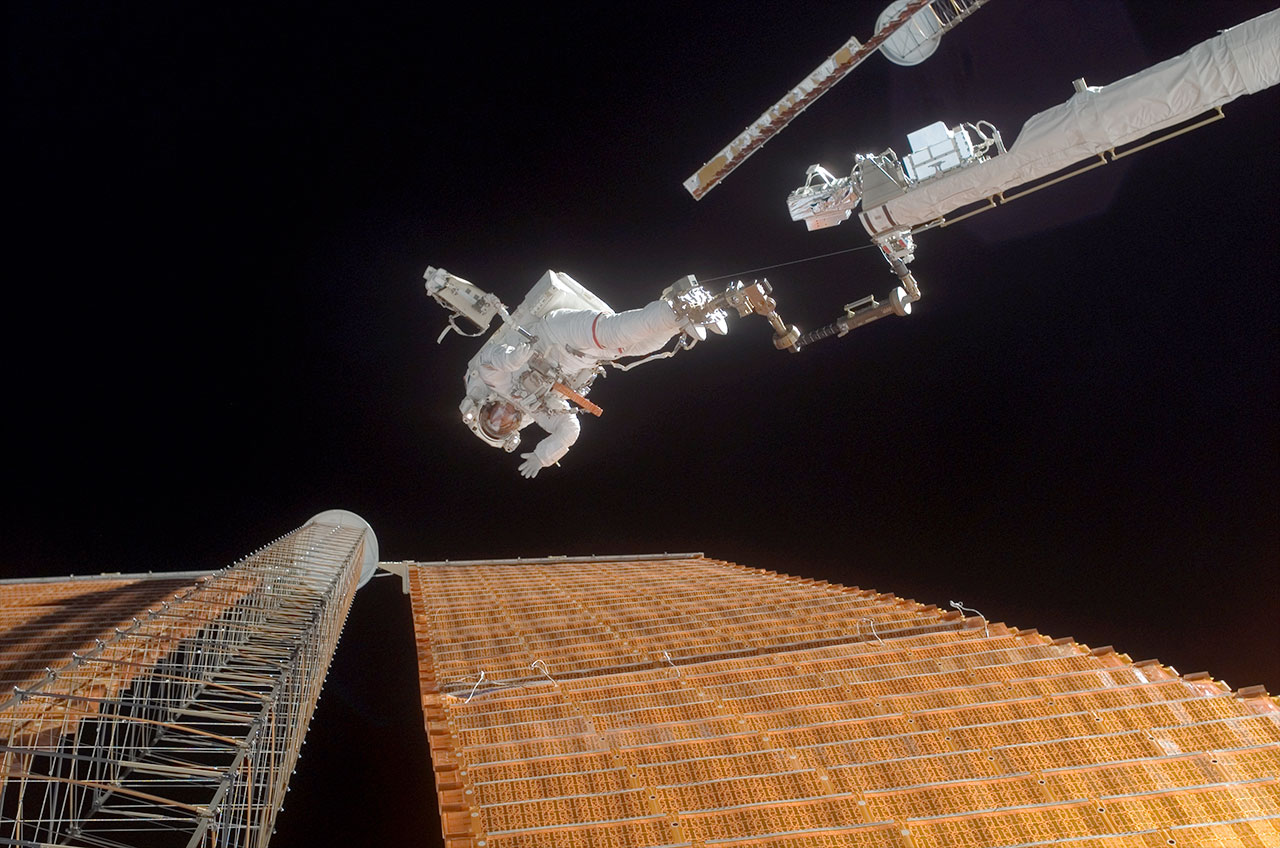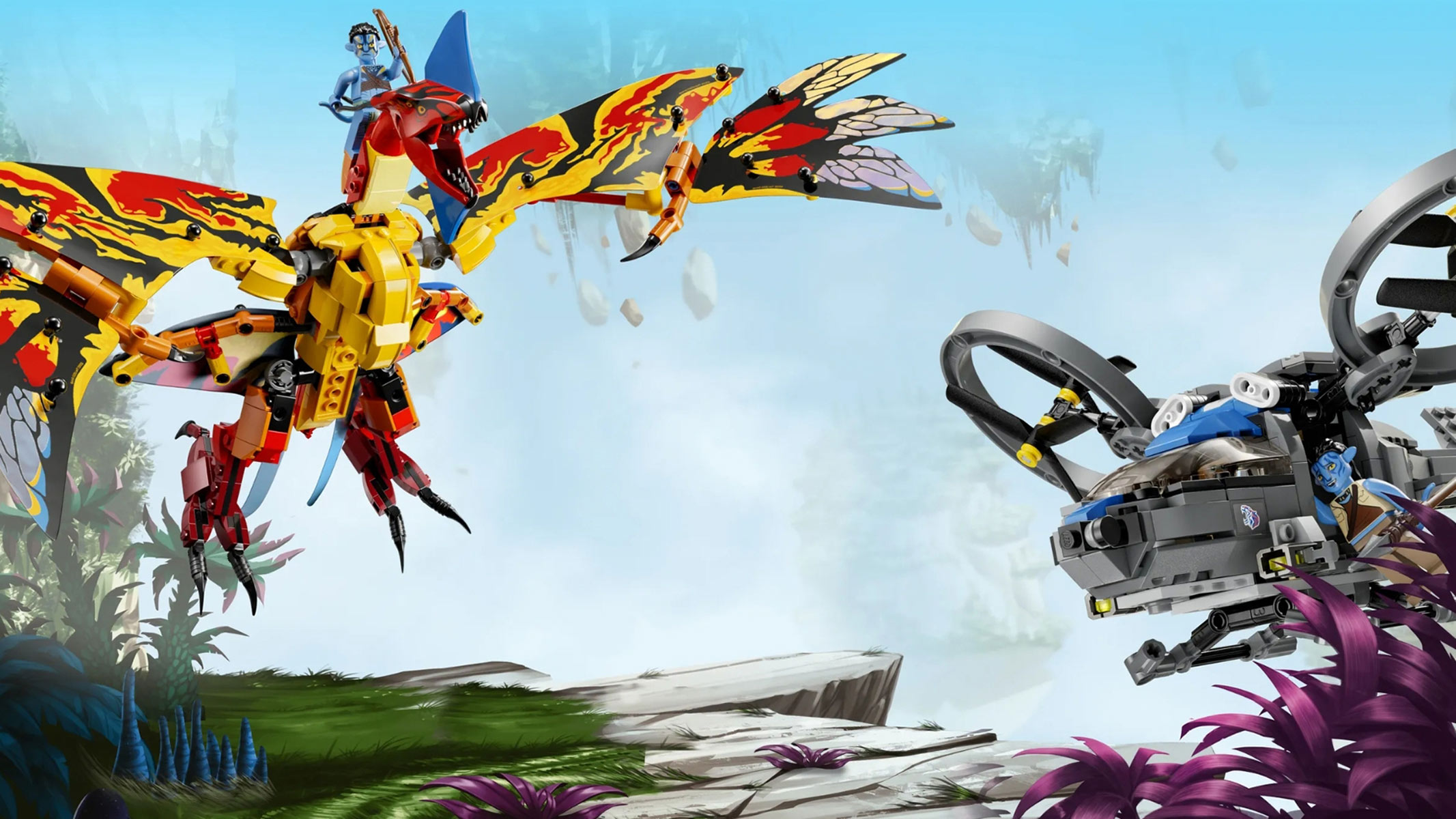The International Space Station has been humanity's foothold in orbit for 20 years
For 20 years, humans have had an unbroken presence in orbit on the International Space Station. But that two-decade stretch is just the first phase of a bright future for humanity in space, astronauts and the station's builders say.
The stretch of uninterrupted crewed flights to the space station began on Nov. 2, 2000, when the the U.S.-Russian Expedition 1 crew docked for a 136-day mission. The accomplishment is no small feat given situations that could have interrupted the string of missions.
Some of the major obstacles overcome include the loss of the space shuttle Columbia in 2003 that killed seven astronauts, a severe spat in 2014 between major space station partners the United States and Russia concerning Russia's invasion of Crimea, a string of cargo ship failures during the one-year ISS mission in 2015 and 2016, a harrowing 2018 Soyuz launch abort, commercial spacecraft delays and the ongoing coronavirus pandemic in 2020, to name a few.
As the 20th anniversary arrives, the station's current Expedition 64 crew remains busy in orbit. Like most of the 240 or so station residents who came before this long-duration mission, the crew is made up of astronauts working for space agencies. But that demographic will likely broaden very quickly in the coming years.
Houston startup Axiom Space is designing the first operational commercial module attached to the station, a representative told Space.com, and also plans to send up the first of its private astronaut crews next year.
"We are actively supporting … companies to further advance the research and the access to the International Space Station," John Mulholland, vice-president of station prime contractor Boeing and manager of its commercial crew programs, said in a virtual International Astronomical Congress phone call with media on Oct. 13.
"What we've seen over the last 20 years is that access [to ISS] is significantly broadening year over year … which from a result standpoint, means even more science is being done," Mulholland said. "More results are feeding improvements to life here on Earth, and an important advancement of NASA's exploration achievement."
Breaking space news, the latest updates on rocket launches, skywatching events and more!
Building a space destination
Construction activities dominated the early years of the space station as new solar panels, new modules, a 360-degree window and other vital infrastructure were assembled piece by piece by space crews, often assisted by robotic equipment such as Canadarm2 and Canada's Dextre "handy robot."
"I had the extraordinary good fortune to be a part of constructing the space station in all of my missions," Pam Melroy, pilot for shuttle missions STS-92 and STS-112 and commander of STS-120, told Space.com. During her last mission in 2007, a solar panel tore while unfurling for the first time and astronauts and ground support worked for days to create a repair plan.
The agreed-upon fix saw NASA astronaut Scott Parazynski ride a robot arm dozens of feet away from his crewmates. His feet were secured on the end of a robotic boom, itself attached to Canadarm2, while Parazynski used his gloved hands to manipulate tools specially made in orbit to repair the damaged solar panel.
In photos: Building the International Space Station
"It was an amazing experience, and we had a few of those during my missions," Melroy recalled. Another spacewalk during STS-120, she said, saw Parazynski "sprayed with ammonia" while disconnecting coolant lines in preparation to move a space station solar truss. NASA quickly implemented its decontamination procedure for such incidents and Parazynski returned to the airlock with no issue. Still, Melroy remembered the incident as one of the "big, scary moments" in the series of successful station construction missions.
The flurry of building activity slowed as the space shuttle's retirement approached in 2011. Crews increasingly focused on the science, typically running more than 200 experiments in a six-month mission. NASA astronaut Nicole Stott was on one of those long-duration missions tilting toward science, Expeditions 20 and 21 in 2009. At times her schedule was locked down in five-minute increments to get the science work done, but looking back a decade later, she said her experience felt so much more profound than going through checklists.
"There were all kinds of things we got to do," she told Space.com. "Floating through the station, you had this idea of being able to move in three dimensions so effortlessly. When you had your face in front of the window, [what you saw] was a visual and very profound experience. At the end, it really comes down to the fact that I got to be part of something that really is about the great good. It's about improving life on Earth. That's why I try to hold on to, all the time, and to bring that back to Earth."
A commercial future
Now, Boeing is busy preparing for the next phase of station operations, which will open up commercialization activities even further. The company is supplying a commercial spacecraft called Starliner, which failed to dock at the outpost during an uncrewed test launch in December 2019. Fixing the underlying software issues and glitches has delayed the first flight with astronauts until at least 2021 — and that is assuming a second go at an uncrewed mission in December goes to plan.
Another company, SpaceX, has already flown one successful crewed mission to the station for NASA using its Crew Dragon spacecraft, and a second crew is set to launch on Nov. 14. Companies such as Axiom will purchase commercial crew seats from SpaceX for their own missions to the station.
Other commercial activities on station are also ramping up. Already the ISS has hosted numerous commercial science experiments under services company Nanoracks, seven paying space tourists through Russian programs, an inflatable module from Bigelow Aerospace, and commercial cargo spaceships from SpaceX and Northrop Grumman.
Mulholland argued the advances seen in space will continue to flow down to Earth, particularly in fields such as medicine and manufacturing. And he said Boeing is excited to continue supporting these companies after receiving a nearly $1 billion extension to its station support contract in July, a contract that will extend to the end of the ISS current international agreement to 2024. (Numerous space station partners are discussing continuing to work together until at least 2028.)
Parts of the space station will require replacement in the coming years, Mulholland added. "Next year, we'll be flying up some replacement solar arrays [for] power generation and power distribution to the International Space Station, which is really foundational to the ability to survive," he said.
Mulholland added that engineers are looking at mechanisms and other movable parts that break down over time, and continuing to schedule replacements as needed. That said, he noted the space station has been "remarkably robust" and could continue operations "well into the next decade if the mission, from a policy perspective, gets extended."
Once the consortium decides to turn away from the space station, the orbiting complex's future could take several directions, Mulholland added. Perhaps it could be deorbited, like the Soviet/Russian space station Mir. Or perhaps some of the pieces would be separated for different missions, Mulholland said. "We don't want to lock in. You want to have options, and we'll continue to look at those options."
The station was under consideration for the Nobel Peace Prize in 2020, which was ultimately awarded to the World Food Programme in early October. Nevertheless, in a September interview before the recipient was announced, NASA astronaut and four-time shuttle flyer Steve Smith told Space.com he is in awe of the station's success.
Even during tricky times in international relations, Smith said, NASA and its partners have continued work in orbit without interruption.
"It's a stepping stone to greater things, and those of us in the exploration business have very long views of where we're headed in technology and space."
Follow Elizabeth Howell on Twitter @howellspace. Follow us on Twitter @Spacedotcom and on Facebook.

Elizabeth Howell (she/her), Ph.D., was a staff writer in the spaceflight channel between 2022 and 2024 specializing in Canadian space news. She was contributing writer for Space.com for 10 years from 2012 to 2024. Elizabeth's reporting includes multiple exclusives with the White House, leading world coverage about a lost-and-found space tomato on the International Space Station, witnessing five human spaceflight launches on two continents, flying parabolic, working inside a spacesuit, and participating in a simulated Mars mission. Her latest book, "Why Am I Taller?" (ECW Press, 2022) is co-written with astronaut Dave Williams.


